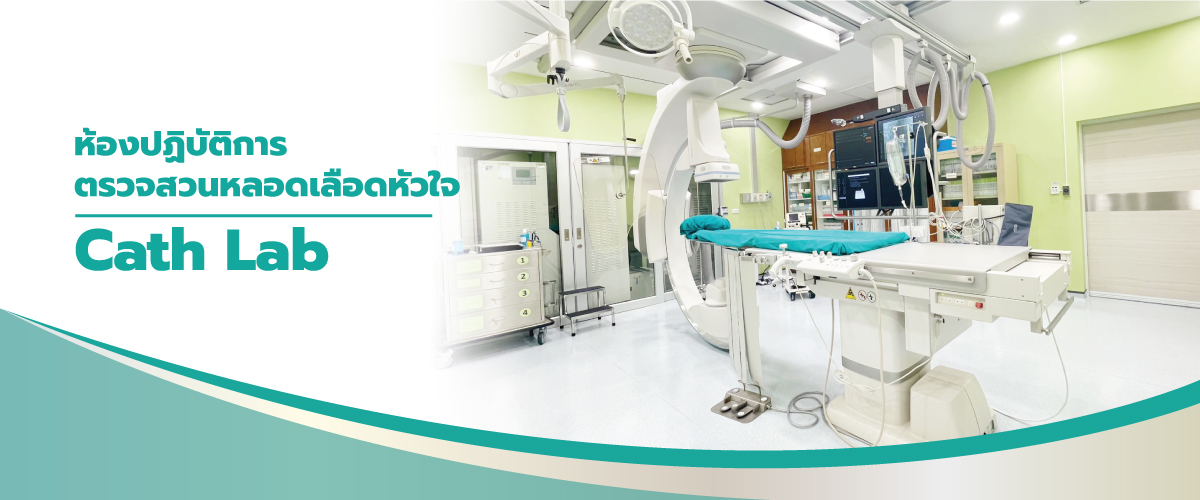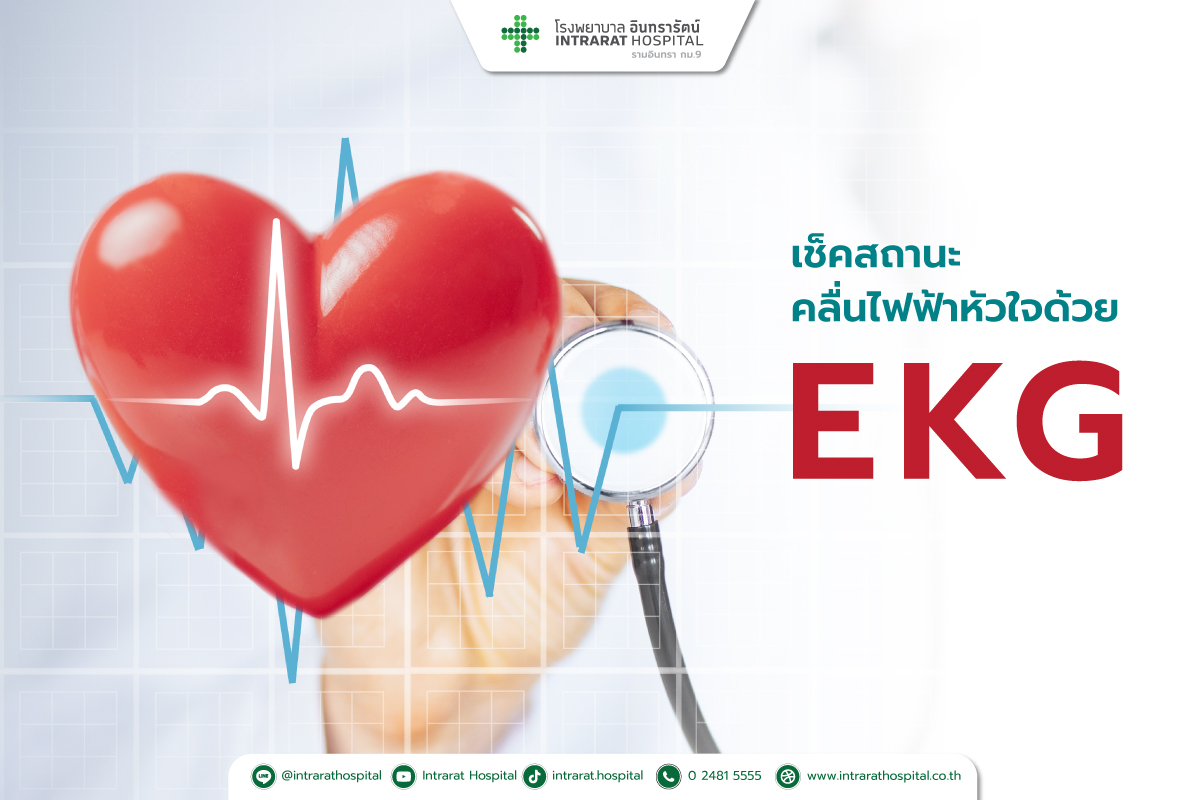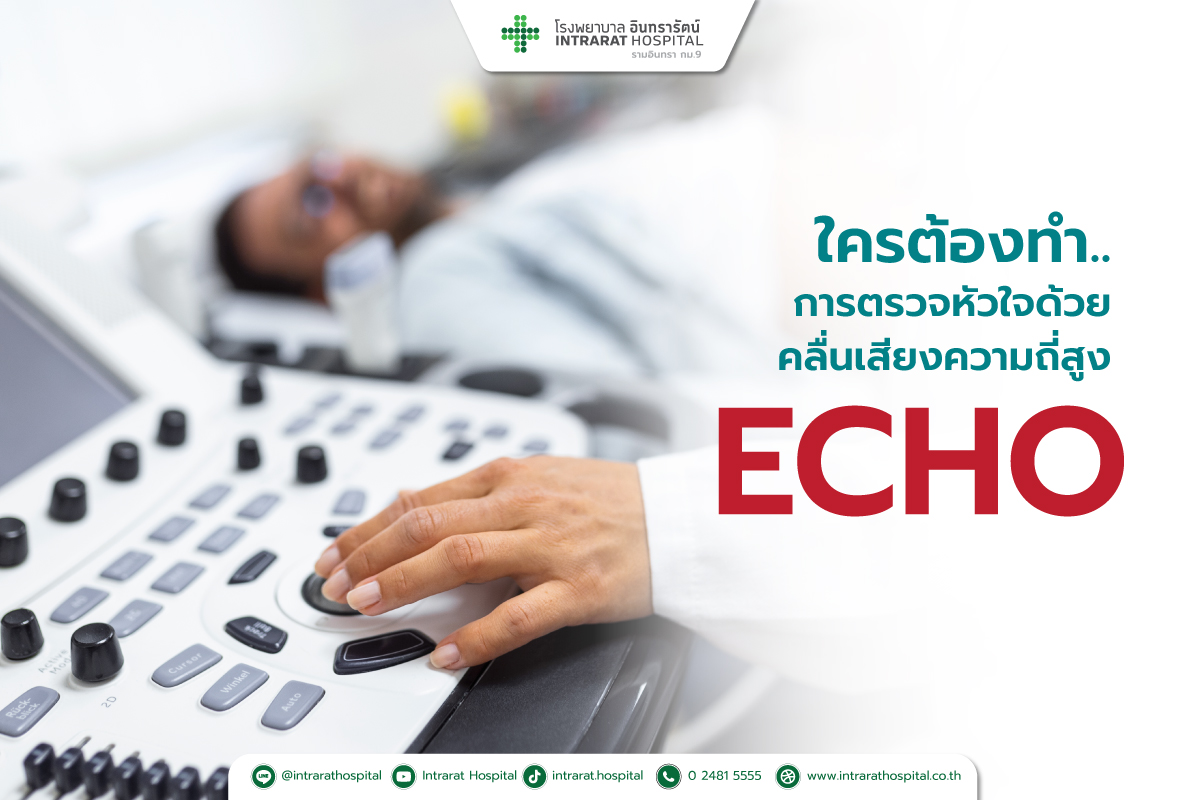Home Clinic Cardiovascular diagnosis, Cath Lab

Cardiovascular diagnosis, Cath Lab
What is Cath lab used for?
advanced modern technology is produced to meet the needs of patients, especially the examination of diseases in vital organs such as heart examination. In addition to examination by Echocardiogram (ECHO), Intrarat hospital provides Cardiac Catheterization Lab or “Cath Lab” for patients at risk of heart diseases or those with heart diseases.
What is Cardiac Catheterization Lab / Cath lab?
A Cardiac Catheterization Lab, also known as “Cardiac Cath Lab,” is a specialized area where doctors perform minimally invasive tests and advanced cardiac procedures for diagnostic and interventional purposes. The Cardiac Cath Lab is equipped with imaging technology, such as fluoroscopy and highly maneuverable tables, with high accuracy monitors to show the fluoroscopy imaging, electrocardiogram (ECG), pressure waves and more. It is used to view the coronary arteries and check blood flow to and from the heart. This provides information to help diagnose and treat blockages and other problems in the arteries.
What is Cath lab used for?
-Heart Catheterization Laboratory or Cath lab is used to see abnormal location and severity of the blockage inside the coronary arteries, look at muscle contraction of the heart, examine the damage of the heart, measure the pressure in the heart chambers at various locations and examine the heart valves. If abnormalities are found, doctor can expand the coronary arteries with balloons and stent.
-Cath Lab can also be used to diagnose and treat cerebrovascular conditions, such as ischemic stroke. This can be examined by injecting special contrast to view the arteries involving the cerebrovascular system.
When should Cath lab be done?
- For people with coronary heart disease and myocardial infarctions (“heart attacks”) caused by insufficient blood supply to the heart. Patient will become easily fatigue and experience chest tightness for more than 5 minutes. However, Cath lab will be the final procedure for people who experience this episode as there is a risk of death from the heart disease itself.
- For measuring pressure in the heart chambers.
- For people who is preparing for Open Heart Surgery.
Procedure
A Cardiac Catheterization or Angiogram involves insertion of a catheter into a large vessel in the upper thigh or arm, then guided through the arteries to the heart. A special contrast dye is injected into the catheter which flows to the coronary arteries and heart. The dye will show blood flow through the arteries of the heart and the location of any blockages. The procedure
takes around 20 minutes. If there are abnormalities, the cardiologist can pinpoint the location of the blockage and perform treatment.
Preparation before cardiac catheterization
- Patient will undergo physical examination, including blood tests, chest x-ray and ECG.
- Patient do not need hospital admission prior to the examination day, unless advice by the cardiologist.
- Patients should take a shower to clean the body. The groin area, which is where the doctor will insert the catheter, will be shaved and cleaned.
- Patients must refrain from food and water approximately 6 hours prior to the examination.
- Before the examination, patient must remove clothes, including jewelry.
After cardiac catheterization
- After cardiac catheterization, the doctor will advice the patient to lie still and adjust the bed to raise the head to 30-45 degrees. After that, patients will be able to walk, sit and do light activities. Do not lift heavy objects or exercise vigorously to prevent the tearing of blood vessels.
- The staff will apply pressure on the wound to stop the bleeding for at least 2-4 hours.
- If you experience shortness of breath, palpitations, chest pain, dizziness, excessive bleeding in the wound, rash on body and feet or numbness, report to the staff immediately.
- Avoid contacting the wound with water. If the wound is dry, the patient can shower normally. However, if the wound is not dry, wipe the wound with alcohol and apply a plaster to the wound.
- In the case where patient does not have water restriction after the examination, the patient should drink plenty of water (at least 2000 mL per day) to allow the kidneys to excrete the contrast agent through urination.
- Refrain from drinking alcohol, tea, coffee, soft drinks and smoking.
- Eat healthy foods. Avoid sweet, oily, salty food as it will increase the work of the heart.
Specialist doctor
Article
Exercise Stress Test (EST)
Testing your heart's fitness while exercising: EST (Exercise Stress Test) is an electrocardiogram while working hard.
- More
- 27/05/2567 09:10:46
Electrocardiography
Heart disease screening using an electrocardiogram is a preliminary test to detect any abnormalities that may occur or have occurred.
- More
- 27/05/2567 09:04:59
Echocardiogram (Echo)
An echocardiogram is a test to assess the efficiency of the heart's function.
- More
- 24/05/2567 15:36:36
Copyright @ 2021. All Rights Reserved By Intrarat Hospital



